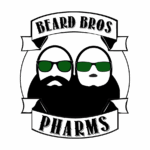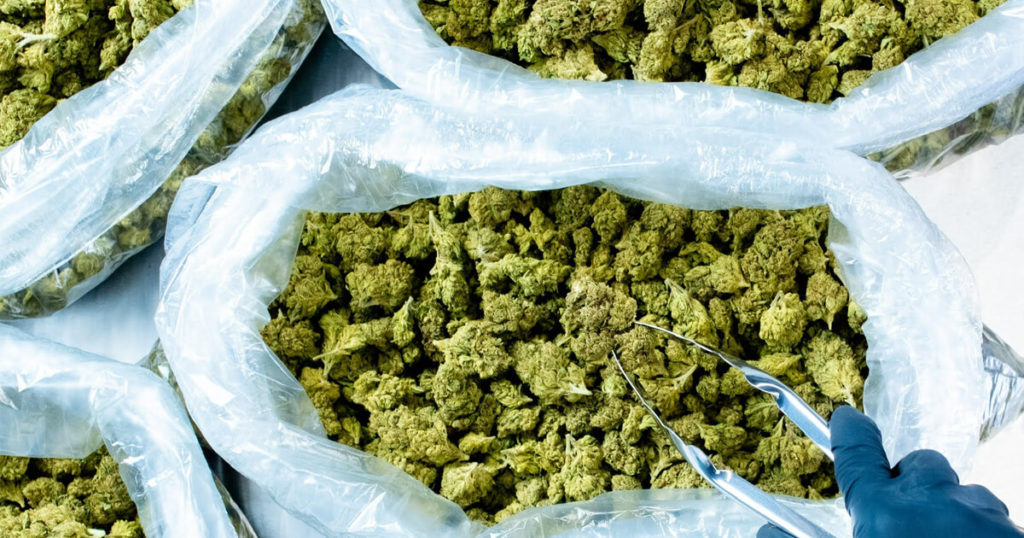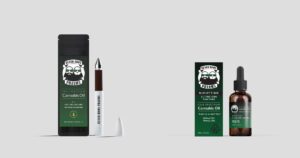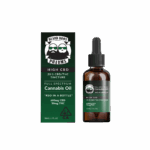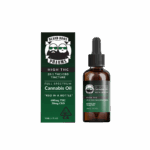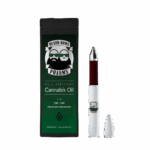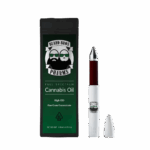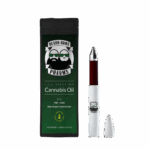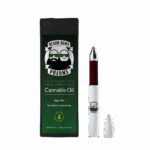Every good toke of weed you have ever enjoyed began as the right genetics in the right farmer’s hands in the right environment.
Months of hard work and high risk consistently culminates to bring you the bag or jar jammed with the cannabinoids and terpenes you seek, stored in each glistening trichome.
For most of our own decades-long relationship with the plant, cannabis lab testing was not even a consideration, let alone the reality that it is today. If you knew anything at all back then about THC or CBD you were automatically light years ahead of the curve yet, somehow, we all knew what was “good” and what was not.
These days, testing for potency is only part of the task given to state-sanctioned cannabis testing labs. They must also ensure the purity and safety of the product samples that they analyze and allow through to the marketplace.
There are extremely low thresholds for impurities like residual pesticides, molds, or heavy metals, so any product hoping to make it to the regulated market cannot mess around with such potentially harmful materials. This boosts customer confidence.
What about potency testing, though?
Does it ‘move the needle’ on consumer confidence?
Does it drive sales?
Does it even matter?
We would argue that the answer to all of the above is ‘Yes’.
WHY MORE CANNABINOIDS MATTER
Although most seasoned cannabis connoisseurs think they can tell the “good” from the mids with nothing more than a peek, pinch, or a sniff, most of today’s cannabis custies are admittedly naïve when it comes to topics like terpenes, cannabinoids, and the harmonious full spectrum blend of the two.
Many of them never look past the THC total, if they look at all, when making a decision at their dispensary. That is a rookie mistake that we have written about before.
But if we ourselves got by (and got high) for so many years while completely oblivious to the Entourage Effect, why does it matter now?
Here’s why it matters.
The cannabis plant is still federally prohibited and is still listed as a Schedule I narcotic. This has stunted the research potential of the plant, keeping worthwhile samples out of eager researchers’ labs for far too long.
That shifted the duty to us cannabis producers and consumers and it is because of grassroots anecdotal stories of “miracle cures” that cannabis now rides such a strong wave of mainstream support.
The explosion of the popularity of CBD, for example, is rooted in the hills of Humboldt where Lawrence Ringo and Harry Rose turned some odd low-THC/high-CBD cannabis cultivars into the full spectrum cannabis oil that cured Rose’s life-threatening autoimmune disease.
The two went on to help countless others find hope and the “miracle” became reality.
This is just one of endless such stories woven into the fabric of cannabis culture and was certainly an inspiration in our own quest to craft the most medicinal cannabis product we could imagine.
Our Beard Bros Pharms Full Spectrum Cannabis Oil is an ideal example of that drive. While some companies advertise their cannabis oil products as having been derived from a single strain or cultivar, we do things a bit differently.
By blending selected strains known for producing an abundance of specific cannabinoids, we “stack” their inherent cannabinoid profiles together to deliver what we believe is a maximum medicinal effect.
This doesn’t “double” the THC, or anything like that. Instead, it complements those predominant cannabinoids like Delta-9 THC and CBD with as many accompanying cannabinoids as possible – each one enhancing the rest in what we call the Entourage Effect.
With the introduction of third-party cannabis lab testing came the analytical data needed to translate so-called miracles into real-life science and biology.
We have been testing our Full Spectrum Cannabis Oil with CannaSafe here in Los Angeles for years, dating back before Prop64 took effect, and it has been enlightening to see our test results evolve over those years.
Just like the biology of the plant itself, nothing changed in that time as far as our manufacturing process, but labs continue to evolve their standards and their capabilities leading to more comprehensive COA’s, and that absolutely matters.
THE EVOLUTION & IMPORTANCE OF CANNABIS LAB TESTING
In a recent article on CannaSafe, we reported that as a part of the lab’s new Potency Validation service all COA’s will now have 15 cannabinoids accounted for, up from their previous total of 11.
CannaSafe clients can now be on the lookout for the additional cannabinoids CBCA, CBDVA, CBT, and THCVA on their lab test results.
This is just the beginning, according to CannaSafe’s Chief Science Officer, Ini Afia, who says that more cannabinoids will be added soon.
As cultivators and manufacturers get these updated test results back and begin to analyze the new findings they see in the cannabinoid column, what truly constitutes “good” cannabis will come more clearly into focus.
Cultivars will be selected and bred even for the inclusion of relatively minor amounts of any exotic cannabinoids that continue to pop up in top-shelf weed.
“Total Cannabinoids” findings should go up.
Just because we can now quantify four more cannabinoids doesn’t mean they just appeared. They have been there all along but now we can target them, study them, and appreciate that our understanding of the Full Spectrum will now get a bit more… Full.
Afia says that this advancement was made possible not only by the recent staff restructuring at CannaSafe but also by a lab full of newly acquired state-of-the-art instruments now in place at their Los Angeles location.
Knowing that even the cleanest laboratory environment will have residual solvents in its own air supply, CannaSafe even built out a new dedicated Solvent Testing room with its own air filtration system, ensuring that samples do not inadvertently pick up impurities from the air itself.
CannaSafe has been able to hone their Limit of Detection (LOD) and Limit of Quantification (LOQ) standards to not only be competitive with other labs but right in line with regulations set forth by the Bureau of Cannabis Control (BCC), all without sacrificing one iota of consumer safety.
A restructuring of both sampling and testing procedures has led to a much higher degree of accuracy between R&D test results and compliance test results, giving growers and manufacturers accelerated turn-times as well as peace of mind every step of the way.
CANNASAFE IS ALL THAT… AND THEN SOME!
In California’s regulated cannabis market, the lab test results (COA) expires one year after it is issued.
Without a valid COA, a product cannot be legally sold at the retail level, so these products are usually heavily discounted leading up to the expiration of the COA, often leading to a loss in revenue for the retailer.
But what about the cannabis itself? Does it have an actual expiration date once the customer gets it home? If so, how would the stability of the cannabinoids in cannabis products vary depending on the consumption method? Can that window of time for safe consumption be shortened or lengthened by outside variables?
All these questions and more are currently being studied by CannaSafe which has been doing a lot of R&D testing of their own of various cannabis and hemp products which they are able to put through an artificially accelerated timeline to determine just how shelf-stable they truly are.
CannaSafe is currently offering two kinds of stability tests, what they call “real-time” and “accelerated” testing.
Each one has different climate (humidity and temperature) settings and in their “accelerated” environment, six months in the stability chamber is equivalent to two years on a shelf per AHPA (American Herbal Products Association).
They are not doing this because the state mandates that they do it.
They do it because they are curious and inquisitive, and they happen to have the expertise and instrumentation to get it done.
Though the state mandate for third-party lab testing is primarily focused on consumer safety, the data they produce will be useful to everyone with an interest in cannabis.
Similarly, CannaSafe is now offering testing services for the detection of Hop Latent Viroid (HLVd).
HLVd is a problem in the cultivation stage that most often occurs due to the use of non-sanitary pruning and gardening equipment and can decimate a significant percentage of a cannabis crop by stunting the growth of healthy green fan leaves, flowers/buds, and trichome heads.
Though most cases of HLVd are a result of “mechanical transmission” (ie. dirty clippers touching a wounded plant), it is believed that the detriments associated with HLVd can potentially be transmitted into any seeds borne from an infected plant.
With a positive identification from CannaSafe, however, cannabis cultivators and breeders can quickly and confidently eliminate those infected plants and avoid any seedstock from them.
It is this commitment to the entire cannabis community that keeps us coming back to CannaSafe.
Recruiting and hiring some of the brightest minds in cannabis testing, equipping them with the latest instrumentation, and giving high priority to customer service are just a few of the ways that CannaSafe is leading the industry into the ever-evolving future of legal weed.
